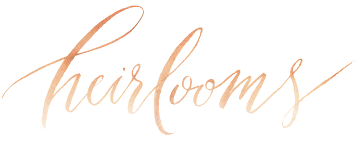A symbol of love, peace, fertility and celebration, the flower crown has been around for centuries and centuries, adorning heads across the world for a variety of reasons and celebrations. Today it is just as glorious and widely celebrated as an easy to design and wear, and because it's undoubtedly one of the most gorgeous accessories for the natural, bohemian or romantic bride.
Want to know more about our love of the classic floral headpiece? Here's A Brief History of the Flower Crown by Simone Hill from The Knot that gives a nice snapshot history lesson on the adornment and fascination:
The Ancient Greek Flower Crown
Flower crowns were common in ancient Greece; it was especially popular to wear them at special occasions to honor the gods. Going along with that idea, during the same era, the laurel leaf wreath came into fashion as well (think: Julius Caesar). These laurel halos would be awarded to army victors to honor achievements and signify respect.
The Medieval European Flower Crown
During this period, flower crowns actually fell out of fashion. The reason? Many pagan religions that used flower crowns in religious ceremonies and to adorn statues of their gods were condemned for their associations to blasphemy. In other words, it wasn't safe!
The Ukrainian Flower Crown
Flower crowns (known as a vinok) are a part of the traditional folk dress in the Ukraine. Oftentimes, girls of a marriageable age would wear them. During the Ukrainian wedding ceremony, wreaths made out of periwinkle and myrtle are placed on top of the couple's heads after the vow exchange. Today, traditional Ukrainian flower crowns are more often seen at festivals and special occasions, including weddings.
The Ancient Chinese Flower Crown
In China, the orange blossom flower crown was customarily worn during a wedding. Since orange trees blossom and bear fruit at the same time, they're meant to symbolize fertility and were thought to bring children to a marriage.
The Victorian Era Flower Crown
Like the white wedding gown, Queen Victoria also brought the flower crown into fashion in Europe. She wore an orange blossom wreath (the idea borrowed from the Chinese) in her hair for her wedding to Prince Albert in 1840. After that, orange blossoms became so closely associated with weddings that the phrase "to gather orange blossoms" took on the meaning "to seek a wife."

